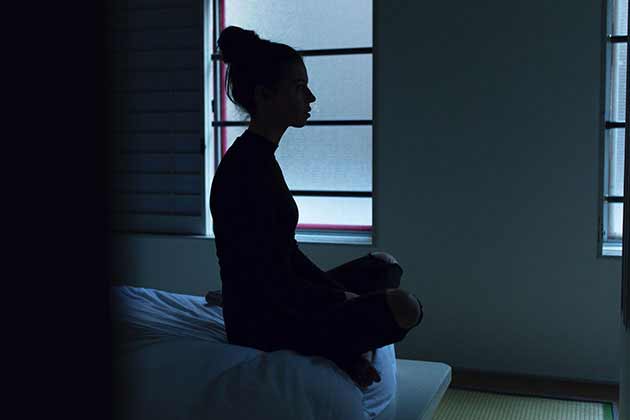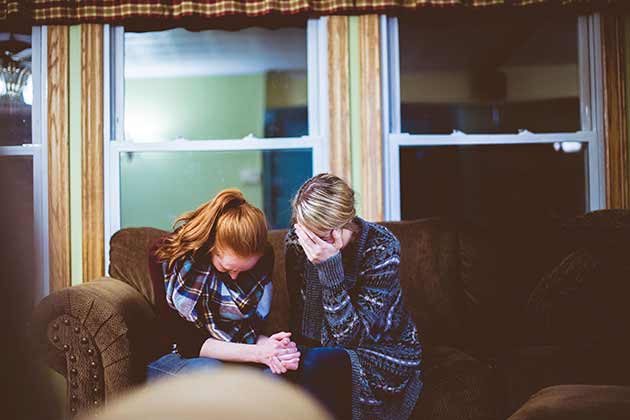Great Excitement

Have you ever gotten super excited about something? Yes? Well, you’re clearly hysteric and should be in an asylum. It wasn’t uncommon for someone to be thrown into an asylum because they simply got too excited.
(Image via Unsplash)
Disobedience
Leaving Husband
Dementia

Since dementia and Alzheimer’s hadn't been discovered, dementia patients were admitted into an asylum. Chances are, they didn’t receive the proper care, so they just deteriorated at a faster rate. To the staff at the asylum, the patient just got worse and worse and nothing could stop it.
(Image via Unsplash)
Melancholy

Post-partum depression is extremely serious and affects one in seven women at a minimum. Considering how many children women had in the 1800s, the chances of a woman getting PPD was higher, and experiencing this disorder would cause her to be admitted to an asylum. There, she wouldn’t receive the treatment she needed.
(Image via Unsplash)
Epilepsy
Downs Syndrome
Mental Breakdown

Having a mental breakdown sadly isn’t too uncommon, and some people may need help from a professional. Unfortunately, someone who had a mental breakdown in the 1800s would be suffering from domestic illness. They would be kept in an asylum and went through a variety of cruel procedures to cure them.
(Image via Unsplash)
Alcoholism

Even today, those that have an issue with alcohol may need help from a medical professional to get over their addiction, but it was something even worse in the 1800s. Someone that gots drunk every day would be labeled as psychotic and suffering from psychosis.
(Image via Unsplash)
Being Sexual

Women in the 1800s were supposed to be very modest in appearance and behavior. If she were “promiscuous” by this era’s standards, she would need mental assistance for being “overly sexual.” Basically, she couldn’t sleep with anyone that wasn’t her husband.
(Image via Unsplash)
Masturbation
Chronic Fatigue Syndrome

Chronic Fatigue Syndrome is a newer disorder that we don’t know much about – even now. Back in the 1800s, they didn’t even know it existed. Those that were considered lazy could be thrown into an asylum, and the level of laziness was debatable.
(Image via Unsplash)
Anxiety
Insomnia

Sleep disorders are extremely common, and insomnia is one of the most prevalent. It leads to symptoms like irritability, depression, and slowness. Due to the lack of knowledge, Victorians assumed insomniacs needed to be in an asylum.
(Image via Unsplash)
Egotism

Don’t love yourself too much or else something bad might happen. How much “egotism” that was required was also really up to whoever thought they belonged in an asylum.
(Image via Unsplash)
PMS

PMS happens to every woman once a month. Some women get a little bummed while others get irritable, but women in the 1800s had to hide it. If she didn’t, she’d be thrown in an asylum because she was having “imaginary female troubles.”
(Image via Unsplash)
Jealousy
Grief

Grief is pretty tough to work through, and no one can tell another when they ought to get over the death of someone close to them…except in the 1800s. Back then, being sad too long after the death of a friend or family member would send you to an asylum.
(Image via Unsplash)
Religious Excitement

Overzealous about your religion? Obviously, you belong in an asylum. Now, we’re all fairly accepting about how people want to practice their religion – even those that allow themselves to be bitten by poisonous snakes on purpose. In the 1800s, that would have landed them in an asylum.
(Image via Unsplash)
Dread of Poverty

Who doesn’t dread poverty? Now, it could be equated to not being able to pay your bills, although you’d just be thrown in debtor’s prison during the 1800s. Much of the impoverished population had been thrown into asylums if the capacity was there.
(Image via Unsplash)
Rejection

How could a woman ever reject a man? There was no such thing as “friend-zone” in the 1800s because that meant you were insane. "Disappointed affections" was the label what the asylum would label, but we know it was telling a guy to get away.
(Image via Unsplash)
Intense Study

Cramming for a test? With the way college is now, almost every student spends weeks at a time studying. This is proof that school was probably easier in the 1800s because studying too hard would clearly be a sign of insanity.
(Image via Unsplash)
Domestic Difficulties
Protesting

It isn’t uncommon for people to protest something in their life, but every protester would have been thrown in an asylum for civil disruption. This goes double for a protest that led to rioting – although, it didn’t take much for a protest to be considered a riot back in the 1800s.
(Image via Unsplash)
Being Gay

Loving someone of the same gender was seen as taboo and insane in the 1800s. Most asylums would mark the reason for this as “madness,” but the reason didn’t matter so much. Most patients were there because of “sexual intemperance.”
(Image via Unsplash)
 Author
Shannon Sanford
Last Updated: August 30, 2018
Author
Shannon Sanford
Last Updated: August 30, 2018







